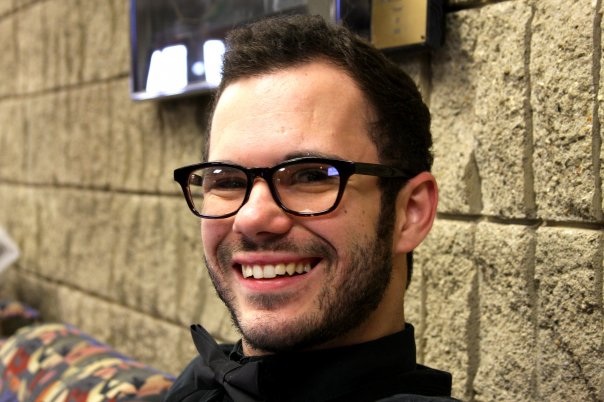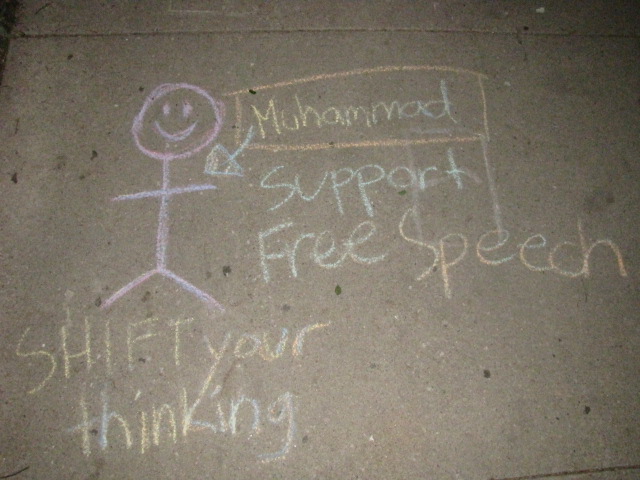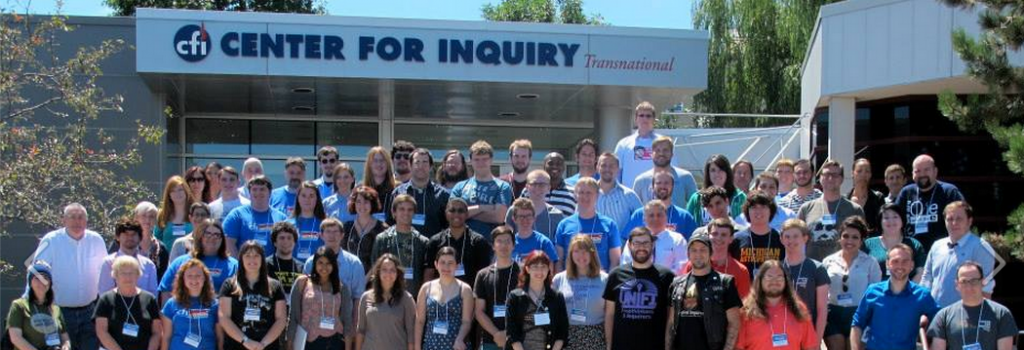Today’s guest post in our ongoing series of guest contributors comes once more from Nicholas Lang, who previously submitted guest pieces considering Park51 and the state of American dialogue and reflecting on the ramifications of “Everybody Draw Muhammad Day.” Today’s piece is a personal triumph; searing, sobering, and terribly relevant. There’s really nothing more that I can say about it, besides the fact that you must read it. Seriously. Read it:
When I heard about Tyler Clementi for the first time, I looked into the face of a stranger. I didn’t know his middle name or what he was really like, but when I heard that he had leapt off of a bridge to take his own life, I cried. When I heard about Tyler Clementi for the first time, I saw that many commentators and bloggers were confused by this sudden suicide, said that they couldn’t fathom the incredible loneliness that leads to such a drastic action.
When I heard about Tyler Clementi for the first time, I cried because I did understand. I cried because America is full of Tyler Clementis. I cried because I was Tyler Clementi.
When I heard about Tyler Clementi for the first time, I thought about the first time I pondered committing suicide.
It was 7th grade; I was in gym class, wearing shorts ten sizes too big for me and a thick gold chain with a cross at the end. Thinking about suicide was surprisingly easy. I knew exactly which pills I would take. I knew what my body would look like when my grandmother discovered it in the morning. I knew the words I would write to my family, knew I would take the longing looks I sent to a certain male classmate with me to my grave. I couldn’t name my feelings, but I knew I wasn’t like everyone else. I knew I wanted to be the same, to cover up the Agatha Christie books I read in secret, to feign interest in the bland rap songs the other students were blaring.
And if I couldn’t minimize my difference, I would execute it.
Throughout high school, I would devise a number of ways to kill myself, some melodramatic, others rather macabre; my preferred method involved a simple revolver to the head in my stepfather’s dilapidated pick-up truck. I even made it into a favorite pastime, finding myself surprisingly adept at doodling my Rube Goldergesque strategies in my notebooks. For me, suicide was the only way to sublimate the secrets I couldn’t share, to minimize the hurt of having my backpack thrown in a garbage can, to deafen the “gay jokes” of a father who had to know what he was doing to his oldest son.
When I came out in my Very Southern Baptist church at sixteen, a few of my fellow churchgoers were wildly supportive: one boasted that he had been fired from his job at a car wash because of the HRC Equality Symbol that rested proudly on his windshield. However, I was largely met with indifference or scorn, and the week after my sexuality’s unveiling, the subject of Sunday’s sermon was something akin to “San Francisco: How the 21st Century Sodom and Gomorrah is Destroying Your Family.” Although all sinners were in the hands of an angry God, the head pastor sat me down that day to explain to me that God reserved his most special brimstone for us “flamers.” In particular, God was waiting for me specifically, waiting to “cut me down” like a Johnny Cash song. God may have been loving and forgiving for normal folks, but He doomed gays to a life of ostracizion and depression.
In conclusion, my pastor sent me away with a simple homework assignment: change. He asked me to read those Bible passages about my “abomination” and gave me some helpful anti-pornography literature. With a little help from Jesus’ friends in the publishing industry, I was to turn from a sinner into a winner.
After that day, I never went back.
In my case, and in many other cases, religion was used as a tool to divide us, a way to mark “others.” For extremist Salafi Muslims, labeling fellow Muslims as “kafirs,” which translates to apostates or non-believers, allows these radicals to wage violent jihad against their own people. In my case, labeling me a sinner allowed my co-religionists to wage spiritual violence against me, to rhetorically put me to death. I once went to a service where the pastor told us that God loved all of His weeds, but I wondered why I was labeled a “weed.” Why was my difference so pejorative, so ugly? Why was my difference always in need of heavenly forgiveness? Everyone else seemed to agree that weeds like me needed to exterminated, that AIDS was God’s lawnmower. They were so busy telling me to die that I never got around to wondering about how to live.
Years of Pat Robertson condemning me to Hell, Jerry Falwell condemning me to Hell, my grandmother condemning me to Hell only served to further support their argument. When I read about Anita Bryant telling good, God-fearing Americans that they had to “Save the Nation” from people like me, I understand that it’s our culture that teaches LGBT kids to hate themselves. How can we truly speak of change in our society when Focus on the Family ads still proclaim to be saving Americans from us, when Bush’s outspoken opposition to gay marriage largely got him elected in 2004? We uphold the loneliness of LGBT kids when we tell them that their love doesn’t belong in this church, their love can’t go to this prom, their love isn’t legal in this state.
In his seminal book, “Acts of Faith,” Interfaith Youth Core founder Eboo Patel speaks of a “Faith Divide” that permeates today’s society, a religious intolerance that leads people of separate faiths to blow each other up. To borrow from Mr. Patel, what I see in the midst of the LGBT suicide epidemic is a Gay Divide: One which arms good Christians, good Jews, good Muslims to destroy people they don’t know. In a letter published in the Salt LakeTribune, William Germain writes that recent events show a growing “divide in the way we treat each other, whether with religion, race, sex or politics. We have become a people of hate…It’s almost like we’re fighting a bunch of civil wars, and for no reason.”
In an article for the Washington Post, columnist Mitchell Gold likewise finds that these divides can “have deadly consequences. Gay youth who are rejected or ostracized by their families are at high risk of depression, substance abuse, HIV infection, and dropping out of school. They are also at least four times more likely than other youth to commit suicide. For gay youth who are sent to a therapist who tries to change their sexual orientation, that risk is even higher. Let me emphasize, it is not their being gay that puts them at risk but rather how they are treated by their parents and clergy.” Gold’s column was in response to recent remarks by media demagogue Tony Perkins, who has used the “bullying” controversy to publicly insist that it’s not society’s intolerance that leads to the suicide of kids like Tyler. Perkins affirms that what drives them to suicide is an understanding of their own immorality.
Although people like Tony Perkins, and the many others like him, many be on the front lines of this conflict, Gold seems to insist that an entire system of religious teaching and preaching is implicit in perpetuating the Gay Divide. Gold writes, “During my visits with people of faith in all parts of the country, I have spoken with Evangelicals, Catholics, Protestants and Jews who have been taught that homosexuality is immoral and wrong. Almost invariably, they are surprised and concerned when they hear about the harms caused by those teachings. Many have told me they had not fully considered the impact on a gay young person of being told that he is sinful and abnormal, or that he will be cut off from God’s love unless he can do the impossible and change who he is.”
Certainly, the members of my church never stopped to consider what the effect that their condemnation would have on me, the years of psychological damage that thinking God didn’t, couldn’t possibly, love you would cause. I spent years hating God because of the bigotry of one man, and I was lucky that such sentiments didn’t have the same ultimate effect on me that it had on Tyler. Although I am no longer at the point where I call myself a believer, I know what my travails made me believe in: the power of communities to heal. In high school, I didn’t have God, but I had friends to lift me up, friends who understood what being an outcast was like. I had the guidance of a history teacher, who was deterred from taking his own life by the kindness of a complete stranger. These allies were living proof of Dan Savage’s assertation that “It Gets Better.”
And I’m here to tell you: it does get better. I don’t believe in a God, but as a member of theVincent and Louise House, which is DePaul’s Catholic intentional living community, I have nine faithful housemates that I do believe in. As a queer man, I believe in the power of allies like these to help heal the hurt we that we share, to build bridges across social divides. At a recent DePaul vigil to honor the number of LGBT youths who have taken their lives in recent months, a mother from PFLAG came to talk about her unfailing support for her gay son, and another speaker related that their mother’s support in a time of crisis saved their life. But the incredible diversity of attendees showed that this mantle has been taken up by more than just our mothers. In the crowd, I saw teachers, students, friends and lovers standing together, people committed to a better world, committed to making America a safer place for our “weeds” to grow in.
Just as importantly, I stand in solidarity with people of faith committed to speaking about intolerance and calling for change. Following these controversies, religious leaders like Orthodox Rabbi Shmuley Boteach preached understanding and tolerance, wrote that our congregations have a place for all people, regardless of sexuality. But what really inspires me are the people who have come together to take action towards building a culture where people of faith and LGBT people are not seen as diametrically opposed. An ideological cousin to the “It Gets Better” project, the “Faith Gets Better” campaign, an initiative by Faith in Public Life, argues that hatred and bigotry divide us, not religion. These courageous religious folks — some queer, some allies — show us that religion can be a force for good in this conflict.
The “queer people of faith” involved in LGBT Change’s The Faith Project likewise testify to the fact that religion does have the power to affirm people of all backgrounds and sexualities. But at the initiative’s launch on Oct. 20, the evening’s speakers preached a far more important message: faith cannot get better all on its own. If we want a world where religion unites rather than divides, where LGBT kids are safe in their own communities, we have to build it.
As an intern for Interfaith Youth Core, we recently launched the Better Together campaign, where we are asking people a similar question: “What If?” What world could we build if “we took action together?” I already know what this world could look like. I see it every day when people come together to dialogue around difference, when people decide that we are better than inherited hatreds. I see it in the faces of my ever-loving brothers, who never had to work to “accept me” for who I am, whose support and solidarity was as easy as an embrace. I look in their eyes and know that this better world is there, waiting for us to fight for it.
We all have a role in building a society where we love past difference: where we teach our children not to hate each other, where we teach adults not to hate each other, where we are not alone. To be Better Together, all it takes is to be an ally to someone. So, all of you reading this — people of faith, people of no faith — tell someone today that you love them for exactly who they are. Tell them that they don’t need to die for you to stand in solidarity with them. Rather than waiting until it’s too late to honor a loved one, hold up a candle for them today. Taking action now might save a life.
It saved mine.
This post originally appeared on DePaul Interfaith and was refeatured on NonProphet Status at the author’s request.
 Nicholas Lang is the Communications Intern for Interfaith Youth Core and a Senior in International Studies at DePaul University. Nick just started up DePaul’s first film club, the DePaul A.V. Club, and represents the lone agnostic among 2010-2011′s Vincent and Louise House residents, who represent DePaul’s Catholic intentional living and social justice community. He is also the co-founder of the Queer Intercollegiate Alliance, an initiative between Chicago’s LGBT campus groups; a writer for the DePaulia newspaper; and head of Campus Outreach for the Secular Humanist Alliance of Chicago. Occassionally, Nick sleeps.
Nicholas Lang is the Communications Intern for Interfaith Youth Core and a Senior in International Studies at DePaul University. Nick just started up DePaul’s first film club, the DePaul A.V. Club, and represents the lone agnostic among 2010-2011′s Vincent and Louise House residents, who represent DePaul’s Catholic intentional living and social justice community. He is also the co-founder of the Queer Intercollegiate Alliance, an initiative between Chicago’s LGBT campus groups; a writer for the DePaulia newspaper; and head of Campus Outreach for the Secular Humanist Alliance of Chicago. Occassionally, Nick sleeps.












